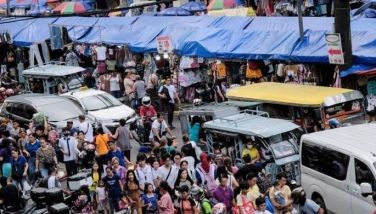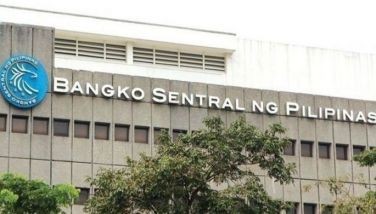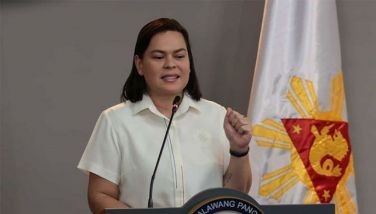The Philippine economy and Benigno Aquino III’s presidency, 2010-2016

We are now in the last six months of the presidency of Benigno Aquino III. Final evaluation of his administration’s impact on the nation is premature.
However, it is now possible to assess where the present administration has taken the economy and, in consequence, the nation.
Judging the economy. There are many ways by which we may judge the economy’s performance.
One way of assessing the economy is to focus on macro-trends and performance: what has happened to overall growth, fiscal and monetary policy, trade payments and saving and investment. I intend to do this today.
A second way to focus on the economy is to point out deficiencies and gaps in performance. Shortcomings could highlight weaknesses that need correction. This type of assessment will be made next week.
Growth. The gross domestic product (GDP) grew by an average of 6.5 percent up to 2015. Because of the election year spending in 2016, the growth rate of 6.5 percent could even be exceeded. However, world economic conditions continue to be uncertain and volatile, and less optimism is warranted.
With the population growth rate of around two percent per year during this period, per capita output has grown by 4.5 percent. This is a substantial record of per capita growth for a sustained period in Philippine economic history.
Such record of growth in current years has been outstanding in the context of East and Southeast Asia. The Philippine performance marks a bright spot in a fairly depressed economic world in this decade.
Drivers of growth. The main drivers of growth have provided a flow of incomes to stimulate consumption expenditures. These growth drivers are led by OFW remittances and earnings from the expanding BPO (business process outsourcing) industries.
OFW remittances have grown from $20 billion in 2010 to almost $30 billion by 2015. BPO earnings have surged and are moving close to the same magnitudes of OFW remittances. Both have strengthened the balance of payments that served to sustain the growth of domestic consumption demand.
The success of BPO service exports has made the country into a leading provider of this service to the international economy. BPO enterprises are high users of labor. They employ many young, skilled university graduates.
Rapid expansion of the BPO sector has fuelled the rise of domestic demand for goods and services of wage earners residing in the country in contrast with Filipino workers living abroad.
These two growth drivers stimulate the economy further through the multiplier process, which simply means the initial expenditures based on incomes derived from them further induce other economic activities to flourish.
Thus, they have caused a rising demand for consumption expenditure. They also stimulated a sustained boom in commercial and housing construction. Evidence of this is the continuous changing face of greater Manila and other major urban centers in the country where BPO centers are getting established.
These drivers of economic growth are not new. They happened during earlier political administrations. The income base from OFWs had been a growing source of income support for decades now. The BPO industries got started during the presidency of Gloria Macapagal Arroyo.
Aquino’s government continued and further strengthened that trend.
Macro fundamentals. The key macroeconomic relationships worked well together. Fiscal, monetary, and trade payments cooperated to produce a stable economic environment.
Despite the relatively hostile external environment during this period, the drivers of Philippine growth led to a strong balance of payments position, yielding current payments surpluses that raised national saving.
The monetary authorities harnessed the current payments surpluses (close to five percent of GDP) by holding inflation to a level within the target range of three to five percent per annum. Moreover, they were able to keep interest rate levels sufficiently low to encourage investments.
The central bank strictly kept the banking system at a high level of capital adequacy in conformity with sound banking standards. Hence, the banking system has been kept in a healthy position capable of withstanding any potential financial pressures.
Frugal government spending has kept the fiscal deficit to a small level. Though there is a fiscal deficit, the government’s fiscal position has been in “primary surplus” meaning tax revenues were kept ahead of total expenditures net of interest payments for debt. A primary surplus is a good sign. It signals the capacity of the fiscal system to liquidate its debt. Sovereign credit worthiness improved.
In harmony with the robust balance of payments position, the strong fiscal position enabled the reduction of the debt burden on the economy. Some debt has been prepaid. Overall, the external debt burden on interest has been kept within safe limits.
(This benefit might reverse a little in the future, because of the expected rise of world interest rates in 2016 and in the future. The US central bank, by announcing the return toward adjusting the interest rates for reasons of monetary policy, has practically announced the future rise of world interest rates, even if only mildly.)
The tax effort has risen to 15 percent of GDP, thanks to tax reform measures and the improvement of tax administration.
The rise in the tax effort has correspondingly benefited sectors that have suffered from the tight fiscal budget in the past. Because of the low deficit level, there is more fiscal space for maneuver in terms of reallocations to critical sectors of the economy.
One of the major components of improvements has been on public education. The budget for education has risen from P175 billion in 2010 to P364 billion in 2014. This is a substantial rise in the educational budget. Even accounting for inflation, the real rise in the budget is significant
By the same token, the budget for the health sector has improved. In general, an improvement of public budget reallocation has favored the expansion of economic services and the social sectors.
Moreover, the share of public infrastructure investment to GDP has risen from a low level of two percent toward four percent. This low level of public infrastructure spending is one aspect that needs improvement, even though the record has improved recently.
Problems and challenges. Though the overall picture looks bright and promising, still, there are many problems and challenges that await attention.
A full assessment of sector issues awaits discussion next week.
My email is: [email protected]. Visit this site for more information, feedback and commentary: http://econ.upd.edu.ph/gpsicat/
- Latest
- Trending































